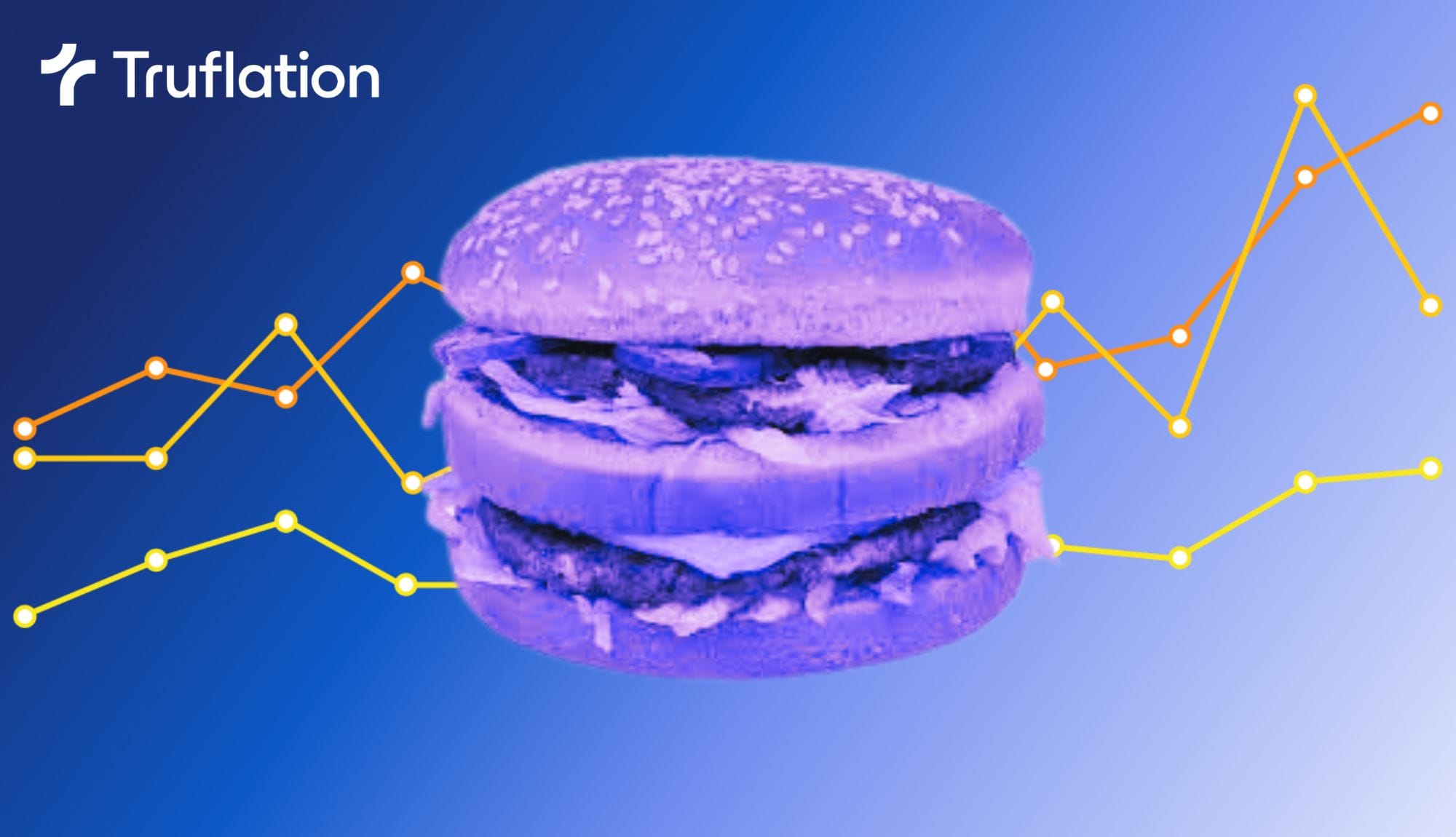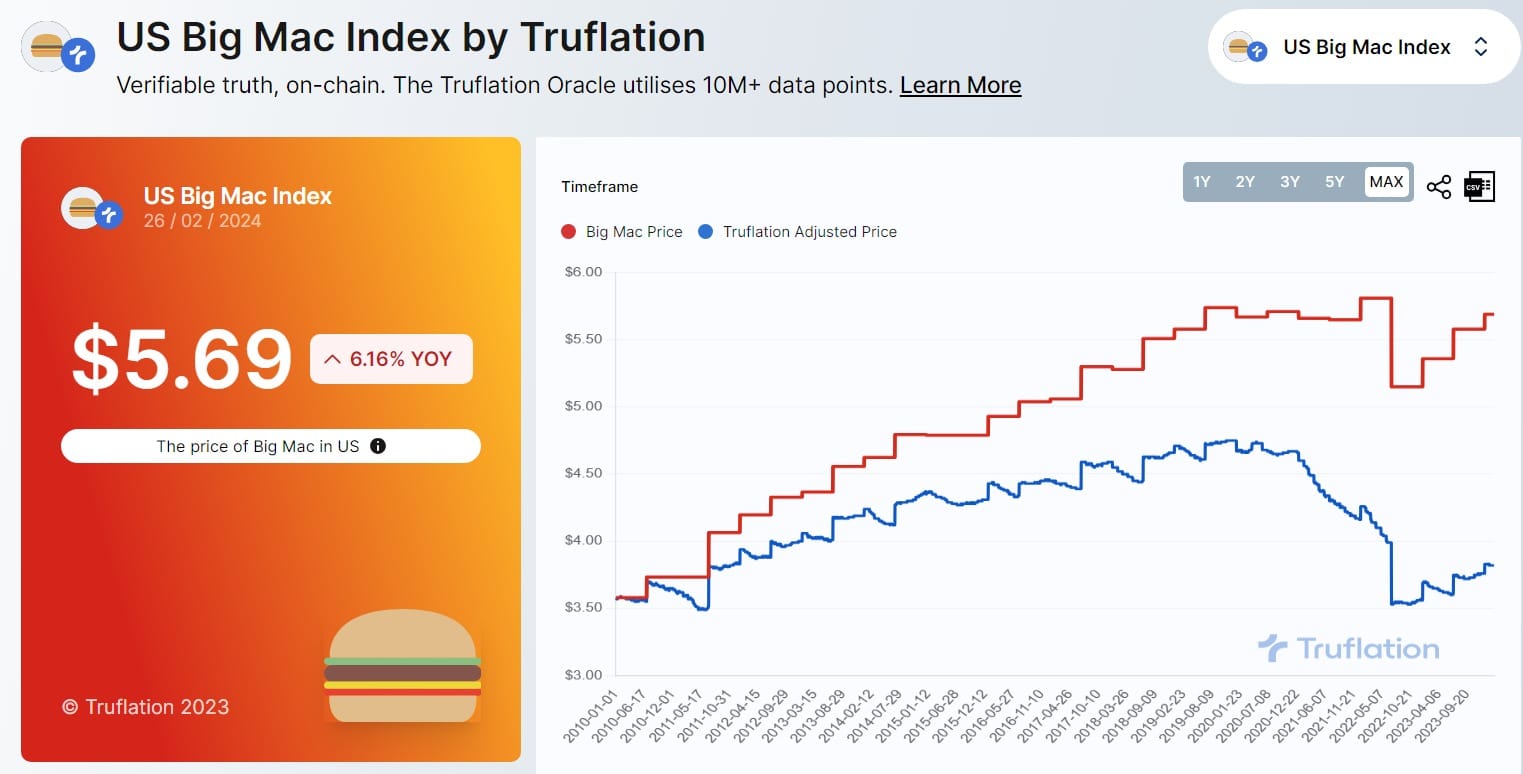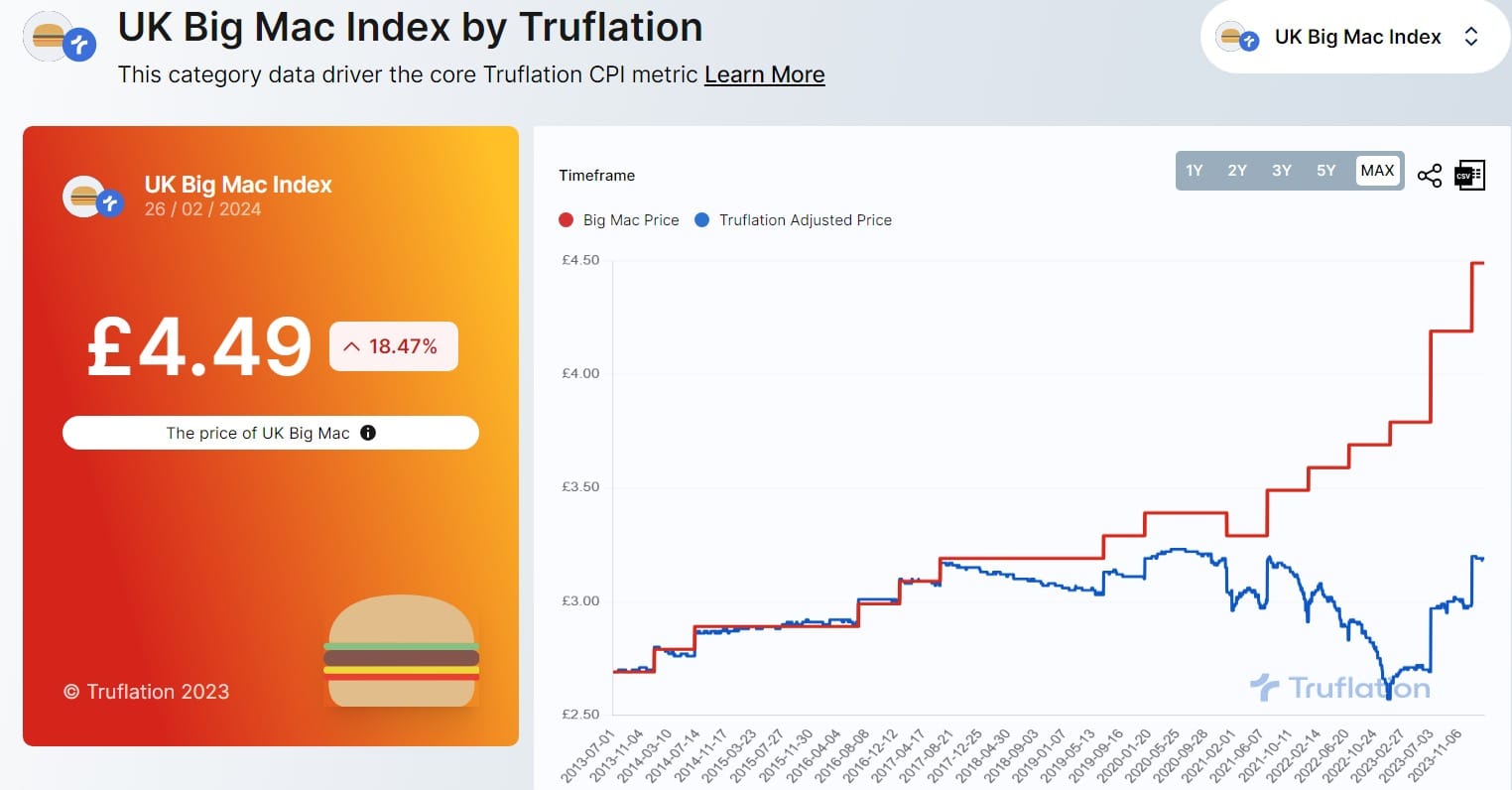
Truflation Launches Big Mac Index for US & UK
Published 26 Feb, 2024
Originating as a whimsical idea, the Truflation Big Mac Index (located on our CPI Dashboard in Data Feeds drop-down menu) transcends the sandwich's culinary origins to become a globally recognized economic gauge.
The index is available for the United States and United Kingdom currently, but Truflation intends to add more countries in the future. The Truflation Big Mac Index contains historical data from as far back as 2010, and is also adjusted daily to include the Truflation CPI.

The Birth of an Economic Icon
The year was 1986 when The Economist magazine introduced the Big Mac Index as a light-hearted approach to explain the concept of purchasing power parity (PPP). Created by Pamela Woodall, the index aimed to simplify the understanding of exchange rate disparities between countries. It ingeniously utilized the price of a Big Mac burger, a ubiquitous item on McDonald's menus worldwide, as a proxy for gauging currency valuation.
Construction of the Big Mac
The quintessential Big Mac is a culinary marvel comprising two all-beef patties, special sauce, lettuce, cheese, pickles, onions, sandwiched between three sesame seed buns. Its construction is meticulous, with each ingredient carefully layered to achieve the perfect balance of flavors and textures. This standardized recipe ensures consistency across McDonald's outlets globally, enabling accurate comparisons for the Big Mac Index.
Sales Worldwide
Since its inception, the Big Mac has transcended its status as a mere fast-food item to become a cultural icon with a staggering global presence. McDonald's, with its extensive network of over 38,000 outlets spanning across 100 countries, sells millions of Big Macs daily. Its widespread availability and affordability make it a favorite among consumers from diverse socio-economic backgrounds, further solidifying its relevance in the realm of economic analysis.
Cultural Impact
Beyond its economic significance, the Big Mac has left an indelible mark on popular culture, cementing its status as a cultural icon. From catchy jingles to memorable advertising campaigns, McDonald's has effectively positioned the Big Mac as more than just a meal—it's a symbol of globalization, convenience, and mass consumption. Its ubiquitous presence in movies, television shows, and literature reflects its pervasive influence on modern society.
Decoding the Big Mac: What its Price Reveals About the Broader Economy

In the labyrinth of economic indicators, from GDP to unemployment rates, one seemingly unconventional metric stands out—the price of a Big Mac. This iconic burger, beloved by millions worldwide, serves as more than just a satisfying meal; it offers valuable insights into the broader economy. In this article, we delve into what the price of a Big Mac can tell us about economic conditions, consumer behavior, and even societal trends.
Inflation and Purchasing Power
The price of a Big Mac can serve as a proxy for inflationary pressures and changes in purchasing power. When the price of a Big Mac rises significantly over time, it signals inflationary trends, as input costs such as labor, ingredients, and transportation expenses increase. Conversely, stagnant or declining prices may indicate deflationary pressures, impacting consumer spending habits and overall economic growth.
Income Disparities and Affordability
Analyzing the affordability of a Big Mac relative to average income levels sheds light on income disparities and economic inequality within and across countries. In regions where the price of a Big Mac exceeds a significant portion of median income, it may indicate financial strain for lower-income households, affecting their purchasing decisions and overall standard of living.
READ The Global Tapestry of Commodities Powering Electric Vehicle Batteries
Consumer Confidence and Spending Patterns
Fluctuations in the price of a Big Mac can mirror shifts in consumer confidence and spending patterns. During periods of economic uncertainty or recession, consumers may opt for more affordable dining options, leading to a decline in Big Mac sales and prices. Conversely, during economic booms, increased disposable income and consumer optimism may drive up demand for Big Macs, resulting in higher prices.
Supply Chain Dynamics and Globalization
The price of a Big Mac reflects not only local economic conditions but also broader supply chain dynamics and globalization trends. Factors such as commodity prices, exchange rates, trade policies, and transportation costs influence the cost of producing and distributing Big Mac ingredients. Changes in these variables can impact the final price of the burger, highlighting the interconnectedness of global markets.
Socioeconomic and Cultural Factors
Beyond economic indicators, the price of a Big Mac can illuminate broader socioeconomic and cultural trends. Its affordability and accessibility make it a bellwether for consumer preferences, dietary habits, and lifestyle choices. Moreover, the cultural significance of McDonald's and the Big Mac as symbols of Westernization and globalization underscores their impact on local cultures and culinary landscapes worldwide.
The price of a Big Mac may seem like a trivial detail in the vast expanse of economic data, but its significance transcends its culinary origins. From currency valuation to consumer behavior, the Big Mac offers valuable insights into the intricate workings of the broader economy. By decoding the signals embedded in its price, economists, policymakers, and analysts can better understand and navigate the complexities of the modern economic landscape.
Want to be part of the data revolution? Join our Telegram to always be in the loop!
Get Exclusive Insights
with our Weekly Newsletter